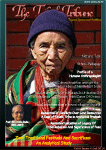Resolution of Conflicts Over Land Resources: A Case of Nyishi Tribe in Arunachal Pradesh
Abstract
Traditional systems for conflicts resolutions in Arunachal Pradesh have been playing a major role to bring harmony and peace among members of the tribal society. These mechanisms are created within a socio-political structure of every tribe. They have been shaped by the realities that are happening in every tribe, making them unique to each tribe. Among Nyishi of Kurung Kumey district in Arunachal Pradesh conflict and conflict resolution mechanisms have never been static. They have been changing gradually over time as influenced by the nature and dynamics of the socio-political and economic activities. However, despite the fact that, traditional mechanisms contribute much to peace and security in promoting development, no thorough study has been done to underscore the nature of conflicts and their mechanisms for resolution among Nyishi tribe. Therefore, this paper tries to fill this gap by analysing the nature of land conflict and the mechanisms for their resolutions. The study applies qualitative approach in exploring the causes, nature of land conflict and the mechanisms of resolving them. Qualitative approach constitutes gathering of views and opinions of respondents about the nature of land conflict and their mechanism of resolving. Also, quantitative approach is used to supplement the information whereby numerical and statistical data could be gathered. The instruments used to collect data were interviews, focus group discussions and observation. The study population included experts for conflicts resolution and other members of the tribe.
Key Words: Land Conflict, Traditional Conflict Resolution Approaches, Nyishi, Arunachal Pradesh
Most scholars agree that conflicts are part of social life. Caplan (1995:1, 9) clearly states that quarrels, disagreements and conflicts are not only parts of the ethnographic data of any society, but also crucial keys to understanding them. Conflict and its resolution involve those interests of anthropology such as norms, rules, morals, authority, meanings and interpretations. Within this framework, this paper considers conflict and conflict resolutions that are so central to anthropology.
The vital importance of land issues to social and economic development among tribal society is incontestable. Land resource is very crucial in any production within a society whereby equitable and secure access to land is a critical factor for the development (Emanuel and Ndimbwa, 2013: 215). It provides a sense of security in contexts where formal employment opportunities and access to resources are limited. Land resources continue to have major historical, cultural and spiritual significance for tribals. In Nyishi society, land plays a big role in sustainable economic development where large population depends on it mostly in agricultural livelihood. It remains the fundamental significance to large majority of people.
Land provides the means of existence that is in food production and without it, man is poor. This is also true for Arunachal Pradesh where to a large extent majority (about 80 per cent) of her population depends on land for agriculture. The remaining 20% of people use land for other activities such as forestry and fishery to mention but a few. Although new generation seemed to favour cash crop cultivation over animal keeping, the main problem again is land shortage. The other problems are that, while population is growing fast land resource is stagnant and thus makes it obvious for conflict to arise.
However, despite the importance of land, it has posed many challenges and become a source of conflict. Land is increasingly becoming a source of conflicts in Arunachal Pradesh, where land access had traditionally been characterized as relatively egalitarian. Conflict is defined as a difference in preferred outcomes in a bargaining situation. It is a disagreement between two or more parties seeking for a particular interest such as social structural, religious sentiments, racial or ethnic differences (Goldstein & Pevehouse, 2006). In other words, conflict may be defined as confrontation that arises from irreconcilable interests of opposing parties. In Arunachal Pradesh, recently land conflict is not a new phenomenon. Even though the state remains relatively comfortable with arable tracts estimated at 2, 00,000 hectares (out of the state’s total geographical area of 8.37 million hectares) for various uses, mostly agricultural activities, the state is not free from land related conflicts. The state has been experiencing an increasing magnitude of conflict among land-users particularly among the cultivators. This situation happens due to the farmers’ expansion into marginal lands resulting into competition between farmers. These conflicts mostly resulted into loss of lives, destruction of property and the turning the areas into war zones, as they try to clinch the right to use the land.
Land conflicts have been major threats to the tribe and a state at large. This is because land resource is the most useful for crops cultivation. Nyishi tribe is not exceptional in facing conflict over land. Nyishi people are one of Thanyi[1] (Tani) group of people in five districts of Arunachal Pradesh. Farming is their main economic activities that influence clashes over land. Being agricultural tribe, land is very essential for crop cultivation. The main crops cultivated among the Nyishi are rice, millet, maize, beans, pumpkins, sweet potatoes, etc. Other activities include forest gathering, fishing and hunting to supplement source of crops and natural products. Hunting, fishing and gathering provided an access to a supplementary source of animal food and natural products. Despite these activities, however, the share of land as well as their inheritance brings the rise of misapprehension and land conflicts in Nyishi tribe.
Conflict resolution is an intricate field of venture with many inter-reliant sorts of activities. Their roots and caustic consequences of conflicts mean that, prudent steps must be employed to resolve these conflicts regardless of the intensity and character of conflict. Conflict resolution is the state whereby the conflicting parties enter into an accord that solves their central incompatibilities, accept each other’s continued existence as parties and cease all violent actions against each other (Wallenstein, 2002:8). Despite the efforts of resolving the conflicts, there have been the propensities of re-occurrence of the conflicts. Land conflicts like any other conflict, do not merely depart through the invisible hand of God.
In Arunachal Pradesh both modern and traditional mechanisms are employed to resolve land conflict. However, in recent times, land conflict resolutions are being emphasized more on modern mechanisms such as negotiation, arbitration, mediation, reconciliation, adjudication as pointed by UN Charter (Chapter Six, Article 33) rather than the traditional approaches. Therefore, there is a gap on the traditional mechanisms for resolving conflict particularly land related conflict in Arunachal Pradesh. This paper tries to fill the gap by examining on the traditional approaches in resolving land conflict among the Nyishi tribe of Arunachal Pradesh. Traditional approaches are used in this paper to mean, the means, tools, or instruments of hearing, making analysis and peace making recommendations for conflicting parties to come to an end of their disputes through a cordial way without causing harm or damage to either party. These approaches or mechanisms are generally closely bound with socio-political and economic realities of the lifestyles of the communities. They are rooted to the culture and history of the people, and are in one way or another unique to each tribe.
Materials and Methods
The study was conducted in two Nyasang (Nyishi) villages of the Kurung Kumey district in central Arunachal Pradesh, namely, Hiya- I and Hiya- II. The choice of these villages was purposefully done due to the fact that these two villages are the largest (in terms of population and area) villages in entire Kurung Kumey district. Time constraint was another factor for selection of the villages as it was not possible to study the whole tribe at the same time. Finally, as because Nyishi tribe used the same traditional mechanisms for conflict resolutions hence to use representative villages was convenient for researcher.
The study used a case study design whereby both qualitative and quantitative approaches were employed in data collection and analysis. Qualitative approach was used for the issues that demanded opinions and views while quantitative approach was useful in information that required numbers and statistics. The study population included men and women above 20 years of age and experts on the mechanisms of traditional conflicts resolution among Nyishi tribe. The selection of the study population above 20 years of age was influenced by the fact that, in these villages people belonging to this age have independent families, and therefore in one way or another they enter into conflicts with other members in the tribe. A sample size drawn for the study was 120 respondents, which includes both general respondents and experts. For this sample size, respondents were selected by using simple systematic method of random sampling. This technique was used to give equal chance for every member to be included in the sample. Out of 120 respondents about 73 (61%) were male and 47 (39%) were female. Number of female respondents in sample size was comparatively low because most of them were out of home during interview due to exigency of household tasks.
Methods of data collection involved the use of multiple data gathering techniques to investigate the same phenomenon so as to improve the validity and reliability of the data collected (Babbie, 1995). The tools used for data collection were the personal observation, interview and focus group discussion. Interview guides were prepared in the semi-structured mode and administered during face-to-face interviews session by the researcher. During focus group discussion, an opportunity was set for every respondent to speak out what he or she thought as sources of conflicts and the mechanisms for managing as well as resolving those conflicts. After debate, the consensus was reached and the researcher recorded the most agreed opinions. For personal observation technique, the researcher was invited to attend the sort of elders meeting called Barak (negotiation) in Nyishi vernacular language. Although the meeting was conveyed in vernacular language, this did not affect the findings of the study since the researcher himself belonged to the same tribe; hence it was not difficult to translate the findings into English language.
On completion of the data collection, verification, compilation and coding the information prior to analysis were done through Statistical Package for Social Sciences (SPSS). Data from the semi-structured questions were analysed quantitatively and the results are presented in tables and figures in the form of frequencies and percentages. Observation provided the researcher chances to see the body language of respondents such as nodding the heads, smile or laughing as a sign of showing agreement or disagreement to what has been raised while debating over the subject of the discussion. Quantitative and qualitative results were reported alongside in such a way that the qualitative results were used to elaborate and validate the quantitative findings.
Results and Discussion
Features of Respondents
In the present study the majority of the respondents namely, 61% were male while 39% were female. Female respondents were few due to exigency of household tasks contrary to men who in most cases were available during the field visits. The findings of this study further show that, the majority of the respondents i.e. 54 (45%) were aged between 20-45 years, followed by age group 46-60 years with 45 respondents (36%) while only 21 respondents (18%) were above 60 years. Thus, the study has taken into consideration the age group that is most vulnerable to conflict. It is in this age group that the family responsibilities weigh heavily on its members to discharge which they depend on land resources. During the process of production and redistribution of resources they were at risk to enter into conflicts with their counterparts. The study also involves people aged above 60 years since most of them are elders who are expert on the mechanisms for handling various conflicts within the community. Arunachalee tribal societies normally made use of wisdom of the tribal elders who intercede between conflict groups to talk with both side, take note of their apprehensions and used their wisdom to convince each side to discontinue hostility. Further the educational attainments of the respondents were as follows; while 31 (26%) of the respondents attained primary education, 15 respondents (12%) attained secondary education and 74 (62%) of the respondents were illiterate. Such composition of the respondents indicates that, most of the Nyishi people are still marginalized in attaining education and therefore most of them depend largely on agricultural cultivation. It may be pointed out that the low educational attainment of Nyishi people acts as a deterrent to their access to development and better life. Needless to say, illiteracy is a very serious problem among Nyishi people and is one of the main causes of underdevelopment. During the focus group discussion illiteracy was mentioned to be one of the sources of conflict among the Nyishi people. Furthermore, it was revealed that, the respondents’ annual income was very low in comparison to living cost. About 80% of the respondents were earning less than Rs. 20,000/- per year that is less than Rs. 2,000/- per month, which was too meagre to support the basic needs such as food, shelter, clothes, health services and education, of their families. Only 20% said that their income was above 20,000/- per year. These findings coincide with those of Arunachal Pradesh Human Development Report-2005 (2006) in that, an estimated 23.7% of the Arunachal Pradesh population lives Below the Poverty Line (BPL), and 17.60% live on less than Rs. 56.2 a day (Table 1).
Table 1: Demographic Features of the Respondents in the Study Area
|
Variable |
Category |
Frequency |
Percentage (%) |
|
Sex of the Respondents |
Male |
73 |
61 |
|
Female |
47 |
39 |
|
|
Age of the Respondents |
20-45 |
54 |
45 |
|
46-60 |
45 |
36 |
|
|
Above 60 |
21 |
18 |
|
|
Education Level |
Primary |
31 |
26 |
|
Secondary |
15 |
12 |
|
|
Illiterate |
74 |
62 |
|
|
Income Level |
<Rs. 20,000/annum |
96 |
80 |
|
>Rs. 20,000/annum |
24 |
20 |
Source: Survey Results (2013)
Land Ownership among Nyishi Tribe
The findings from the focus group discussion revealed that, land ownership among Nyishi tribe had two aspects. First, there was community land, which belonged to all members of the community or village, this land was collectively owned and no individual claimed to possess the right of using communal land more than other. The common usages of communally owned land among others were for collecting construction materials, gathering firewood, collecting ethnomedicine and gathering fruits. On the question of whether common land was appropriate than individually owned land among agricultural society, about 37 (30.8%) of the respondents were of the opinion that, communal land was necessary among Nyishi tribe to lessen pressure for managing animals. On the other hand, about 83 (69.2%) of the respondents interviewed pointed out that, the significance of individually owned land overwhelms that of the communally owned land. The reason being, that communally owned land was not properly taken care and hence it gradually deteriorates or loses its unique feature. It may be argued that, conflict is motivated by the dissatisfied desires of the people, be in terms of autonomy, sense of justice, identity, basic needs, individual right, etc. The majority of these desires are collective in character and are more often than not aggravated by official neglect, persecution, denial of human rights, selfishness or egotism as well as by the haughtiness of power on the part of some local leaders which contribute to the acceleration of conflict.
Another form of land ownership is individual land belonging to individual families or clans. On the issues of administration and uses, it depends upon a particular family or clan members to decide. In some families it was divided into parts such that, a particular portion was for cultivation of crops and other portion for animal keeping. During the interview with the respondents it is revealed that, the tendency to divide the land into portions is increasing among Nyishi tribe simply because without doing that an individual will not be able to get enough pastures as common land is not satisfying the needs.
Fig 1: Land Ownership among Nyishi Tribe (N=120)
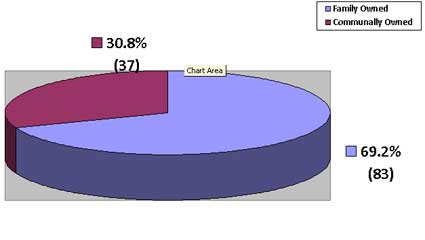
Source: Field Survey (2013)
Causes of Land Conflict among the Nyishi
On the question of the extent to which land have contributed to the rise of conflicts among Nyishi tribe, out of 120 respondents about 56 (46.7%) said that, very often land distribution was the main cause of conflict in the study villages. About 43 respondents (35.8%) agreed that, often land caused conflicts while 17 respondents (14.2%) were of opinions that, land caused conflict but not very often and only 4 (3.3%) of the respondents were not sure whether land was a cause of conflict or not (Table 2). These responses imply the importance of land for Nyishi tribe, which is used both for cultivation and as a source of money by hiring or by selling.
Table 2: Land as a Source of Conflict among the Nyishi (N=120)
|
Item |
Frequency |
Percentage (%) |
|
Very Often |
56 |
46.7 |
|
Often |
43 |
35.8 |
|
Not Very Often |
17 |
14.2 |
|
Not Sure |
4 |
3.3 |
|
Total |
120 |
100 |
Source: Field Survey (2013)
Consequences of Land Conflict among the Nyishi Tribe
There are numerous consequences that are upshots of land conflict in Nyishi tribe. From the focus group discussion, the findings signified that among the major consequences of land conflict was the loss of peace in the tribe, deformation of bond among tribal members, which leads to enemity, depression, death, injuries and depopulation. According to one of the clan elders, ‘once land conflict occurs, the sociable relation amongst groups involved is snapped until the issue is resolved’. Economically speaking, land conflict leads to the destruction of property, the killing of livestock and stagnation of economic activities due to the fact that in lieu of engaging in production, people run for security of their lives and hence the groups involved in conflict suffer. Sometimes people permanently lose their fertile agricultural lands. The land conflict finally, in one way or other, makes the Nyishi people poorer.
Conflict Resolution among the Nyishi Tribe
| Conflict resolution is the situation where the conflicting parties enter into an agreement that solves their central incompatibilities, accept each other’s continued existence as parties and cease all violent actions against each other (Wallenstein, 2002:8). In addition to that, conflict resolution is the way of handling conflict by taking problems out not fighting them out (Nathan, 1996:11). The purpose of the process is not just to finish the conflict, but also to solve the predicament so that all groups in conflict feel satisfied with the verdict. In resolving conflicts, there are two approaches namely traditional and modern approaches. |
|
The traditional mechanism for resolving land conflicts in Nyishi tribe differs depending on the nature and the degree of the conflicts. During the field survey, while interviewing the experts of conflict resolution, one of the respondents (Tarh Tachak), narrated that, “the type of conflict found in communal land was linked to some individuals who dishonoured the statute that administer the collective ownership of land. Some individuals decided to take the portion of communal land and enclose as a private property” . To resolve such a conflict, the meeting of elders termed ‘barak’ is convened by the experts on modus operandi for conflicts resolution called ‘yallung’.
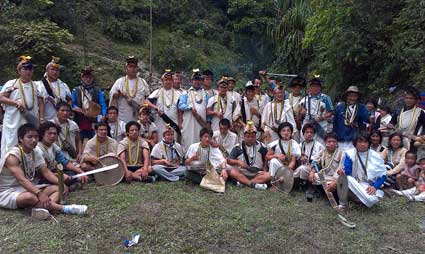
Fig 3: Members Attending Barak (Conflict Meeting)
The accused person is called and asked about his decision and directed to withdraw his decision. In case he agrees then the problem is presumed to be solved. However, some greedy people refuse to accept the advice given to them. In such situation, punishment is awarded to the accused by restoring the land to the community along with one sebe (mithun or bos frontalis) and realising fine from the accused known ashapung pahi[2]. This action, in Nyishi’s vernacular language, is called ‘ Tangriang-Jugbo[3]’. Upon such an action, a punished individual if desires to carry on the good relationship with the members of the tribe; it is his/her sole duty to approach the elders and request them for the meeting in which s/he is supposed to ask for the amnesty for his/her offence. The amnesty is granted depending on the extent of aggressiveness in offender’s conduct and the history of relationship of the offender with the tribe.
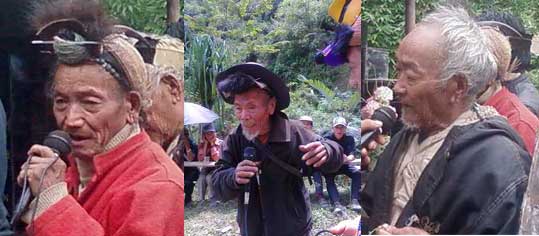
Fig 4: Elders Delivering Final Judgement
In some circumstances, an offender is freely forgiven, or is asked to arrange the local alcohol party called ‘upo or opo’ which is shared by all members of the tribe who have attended the conflict meeting. In a circumstance, which is severe, an offender is asked to provide the sebe (mithun or bos frontalis) that is slaughtered and the meat is shared during the meeting as an indication that a person is forgiven. Very often when they agree to end the conflict, a ceremony is organised which involves feasting with ‘upo oropo’ (traditional brew) and slaughtering a sebe (mithun or bos frontalis), cow or cows and/or goats. This action is called maram-panam.
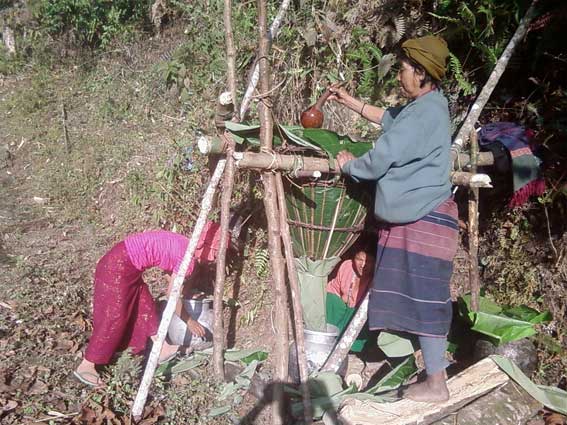 Fig 5: Nyishi Woman Preparing Upo or Opo (Local Brew) |
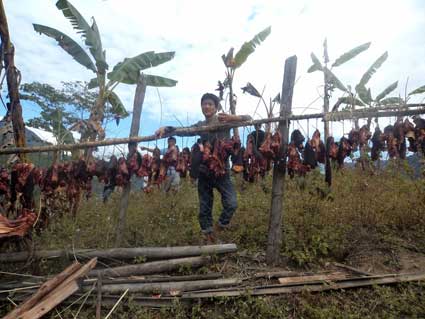 Fig 6:Mithun meat to be Shared |
The case of family land conflict arises when one among family members wishes to expand the margin of the inheritance land, given to him by the family head (father). Once land conflicts erupt within family, it is the father who normally initiates the course for resolving such conflict by listening to the arguments of conflicting groups followed by his advice to them as to how to resolve their differences. In case of any difficulty, to resolve the conflict, he calls upon clan meeting, which is led by the head of the families of the clan. The meeting composed of the conflicting parties, the witnesses to the conflict (if any), the elders who are experts in reconciliation and the neighbours. The issue is listened and the conclusion is reached after dialogue. It is observed that, when harmonious resolution is accomplished at this level, the issue is easily resolved and the level of hostility between the conflicting groups melts away.
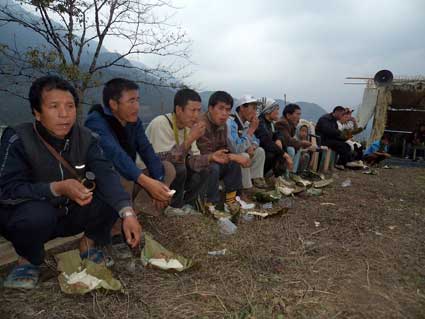
Fig 7: Feast after Conflict Resolution
Conclusion and Suggestions
The current paper comes to the conclusion that, land resource is a prospect if it is appropriately administered and used, but is also a source of conflict as in many tribal communities in Arunachal Pradesh including Nyishi. The resolution of such conflicts in Arunachal Pradesh still relies on traditional mechanisms. Needless to say, unequal distribution of land, greediness and land paucity are some of the major causes of land conflict among the Nyishi people. The study findings show that, death, lack of peace, property destruction, economic stagnation and distortion of tribal relationship are the consequences of land conflict in Nyishi society.
This paper, thus, suggests that for the sake of lessening land conflicts education must be provided to the tribal members on contemporary ways of land management. The government particularly the state government should create employment opportunities for youth so that they could work at other places and the pressure on the land gets eased. To avoid the occurrence of more land conflict, communal land should be shared equally amongst the community members for sustainable usage. At the end of the day, it is observed that traditional mechanisms of resolving land conflicts work effectively. However, due to the changes taking place in the world around us in the era of globalization, the tribal elders need to be equipped with supplementary skills and be exposed to new setting to augment the competence and efficacy of these mechanisms in resolving conflicts.
Notes
[1] Other tribes in this group consist of Adi, Galo, Apatani, Tagin, etc.
[2] It is a sort of honorarium paid to the opposite party after the conflict deliberation.
[3] It is a ‘breach of trust’ where an individual is disobeying the framed resolutions.
References
-
Arunachal Pradesh Human Development Report-2005 (2006). Department of Planning, Government of Arunachal Pradesh: Itanagar.
-
Babbie, E.R (1995). The Practice of Social Research (7th Ed.). Belmont, CA: Wodsworth Publishing Co.
-
Caplan, Pat (ed.) (1995). “Introduction: Anthropology and the Study of Disputes.” In Understanding Disputes: The Politics of Argument, pp. 1-10. Oxford: Providence R I, Berg
-
Emanuel, M. and T. Ndimbwa (2013). “Traditional Mechanisms of Resolving Conflicts over Land Resource: A Case of Gorowa Community in Northern Tanzania”. International Journal of Academic Research in Business and Social Sciences, Vol. 3 (11), pp. 214-224.
-
Goldstein, J.S. and J.C. Pevehouse (2006). International Relations.7th Ed. London: Pearson Longman.
-
Nathan, A. (1996). Everything You Need to Know About Conflict Resolution. New York: The Rosen Publishing Group.
-
Wallenstein, P. (2002). Understanding Conflict Resolution: War, Peace and Global System. London: Sage Publications.



